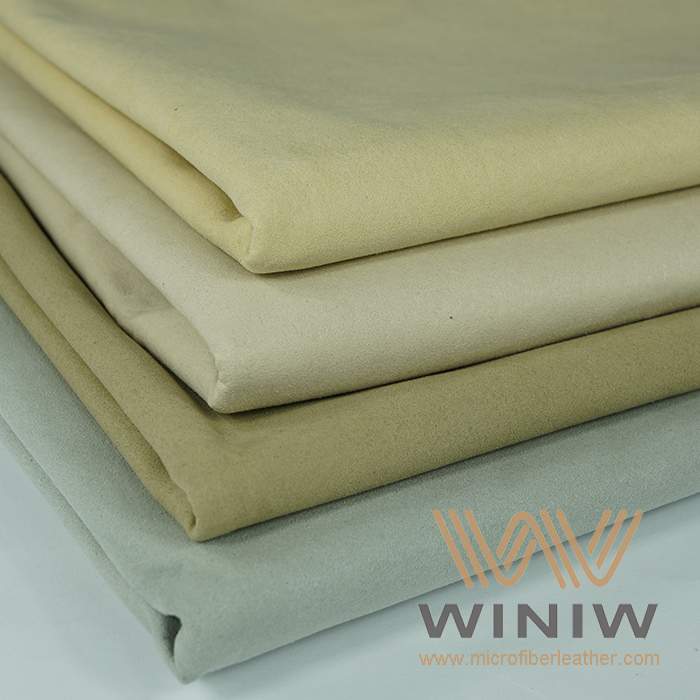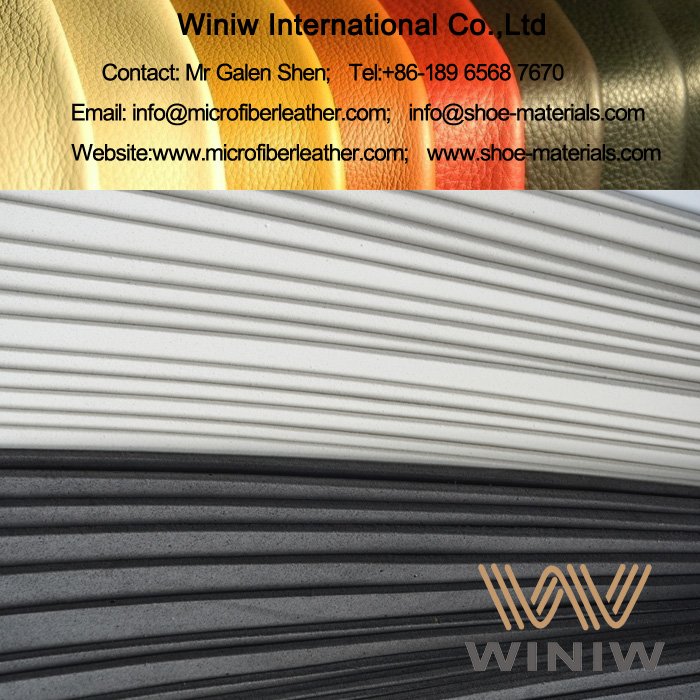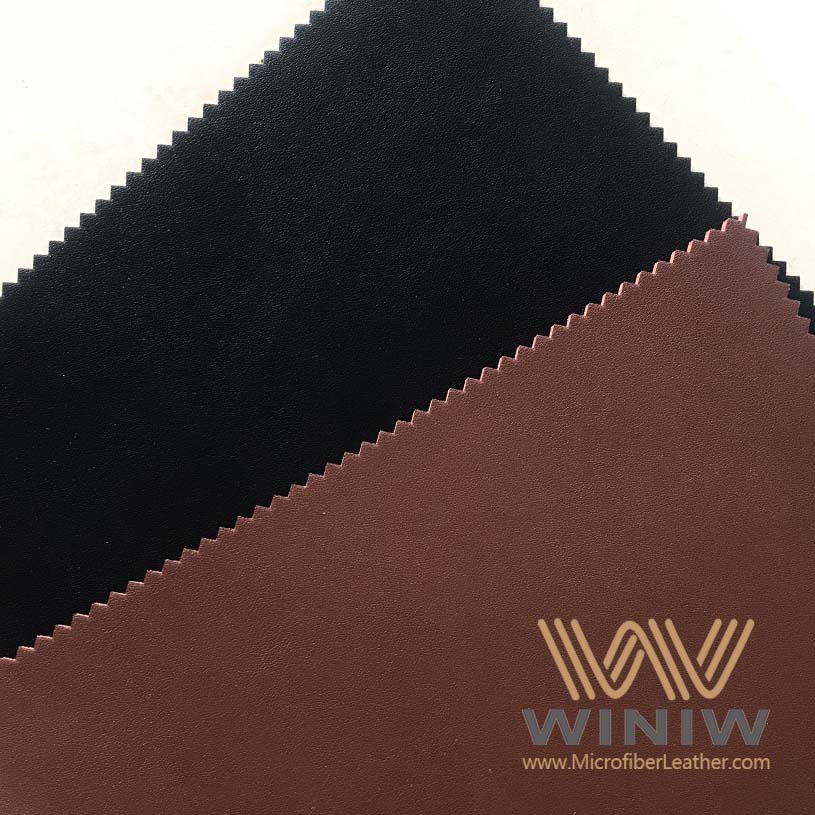What is Faux Leather?
Faux leather is one of several names given to artificial or synthetic leather. These names are often used to describe specific end uses of synthetic leather products such as faux leather (sofa, chair and headboard upholstery), leatherette (auto upholstery, clothing), and koskin (consumer goods). There are three primary types of faux leather construction: polyurethane (“PU”), polyvinyl chloride (PVC – “Vinyl”), and silicone.

Vegan Leather Suede for Footwear Insole
Vinyl synthetic leather has been produced in the United States since the 1940s, initially for products such as shoes, automobile interiors and upholstery. In the late 1950s DuPont and other chemical companies began developing polyurethane products. Silicone upholstery fabrics are relatively new having been introduced in 2010.

Silicone, polyurethane and vinyl synthetic leathers are used in making clothing, upholstery, and product covers, but each is better for certain applications than others. PU fabric is softer, more flexible, and breathable, so it’s more commonly used for making high-wear products, like clothing and upholstery (surfaces that come into direct contact with skin). Vinyl is not as breathable as PU, but this is often ideal for products that need to repel moisture such as book bindings or cases for electronic devices. Silicone is suitable for virtually any application since it possess the advantages offered by both PU and Vinyl.

Vinyl Upholstery
Vinyl upholstery is made from two separate synthetic materials. The fibers of the upholstery are constructed from strong polyester fibers. The fibers are then coated with vinyl, made from polyvinyl chloride (PVC) and plasticizers (phthalic acid). This vinyl is melted onto the surface of the fibers, sealing them closed and making a virtually waterproof surface that is still flexible and tough.
Vinyl upholstery is easy to clean and maintain. This makes it ideal for situations where cleanliness is a top priority, such as in hospitals and restaurants. Vinyl also does not require any special care or conditioning. However, vinyl can become uncomfortably hot if left in the sun. Skin will stick to the surface, creating an uncomfortable seating situation. Vinyl may also crack with extended use. More information about vinyl upholstery can be found here.
Polyurethane Upholstery

PU is made by coating a backing fabric such as cotton, polyester or shredded leather with a flexible polymer and then treating it to look more like animal hide. Polyurethane upholstery is the most realistic imitation of genuine leather, with respect to hand, surface feel, and overall appearance. When stitched, gathered, or tufted it actually “breaks” or wrinkles like real leather. Because there are no plasticizers used in PU upholstery there is no cracking or peeling, and it remains soft and supple for the duration of time it remains on the furniture. They are also easier to decorate designs on them. Polyurethane is considered greener than Vinyl because it does not create dioxins. PU resins are made of a softer polymer and therefore don’t need additional plasticizers. Polyurethane costs less than real leather but it is more expensive to produce than Vinyl. More information about polyurethane upholstery can be found here.
Silicone Upholstery
Silicone is the newest innovation in coated fabrics. Silicone is an organic polymer, unlike PU and PVC which are inorganic polymers. Simply put, organic polymers use cleaner building blocks, like Carbon, at the molecular level. The production process is environmentally friendly. Silicone is produced through a one-station casting process which uses far less energy than a traditional coated fabric manufacturing process. The process does not use any solvents and very little water. Less water to re-cycle (which takes significant energy) or in some cases leads to pollution. There is no VOC released and no air pollution. More information about silicone upholstery can be found here.
Benefits of Faux Leather Compared to Real Leather
Faux leather offers a number of advantages compared to real leather. These would include the following:
Economical – Faux leather is typically much more affordable than real leather.
Durability – Faux leather is very durable and will last a long time. It can withstand scratches and scrapes that would mar genuine leather. It is not prone to crack or peel like leather. It will not fade as easily in ultra violet (UV) light and is stain resistant.
Low Maintenance – Faux leather materials can usually be wiped clean with a rag and warm water. Unlike genuine leather, it does not retain moisture, so faux leather items will not become warped or cracked. Some of the new performance faux leathers can remove ink, liquid and food stains with only a dry cloth.
Realistic Quality – Faux leather has been modified and improved with variations in grain, color and textures to reflect a visual appearance with a realistic leather quality.
Consistent Appearance – Faux leather will provide a uniform look since all the pieces come from the same stock.
Fashion – Faux leathers can also be printed providing enormous variety of textures and patterns. In addition, because faux leather is a synthetic material, it can be dyed a rainbow of colors. This fashion forward approach allows for more freedom when decorating residential or commercial interiors.
Easy to Work With – Faux leather is easier to cut and sew than real leather. In addition, needle marks are usually less noticeable and threads blend with the faux leather material more seamlessly.
Disadvantages of Faux Leather Compared to Real Leather
Faux Leather does have some disadvantages when compared to real leather. Faux leather does not stretch, breathe or wear like leather. Faux leather is very durable; however, it does not develop the same luster and patina over time as leather. Faux leather is not puncture or tear resistant like real leather.

2mm 3mm Thick Faux Leather Fabric Material
